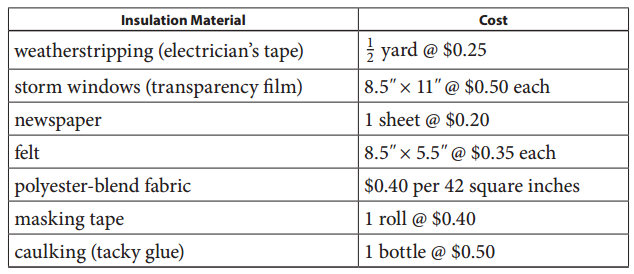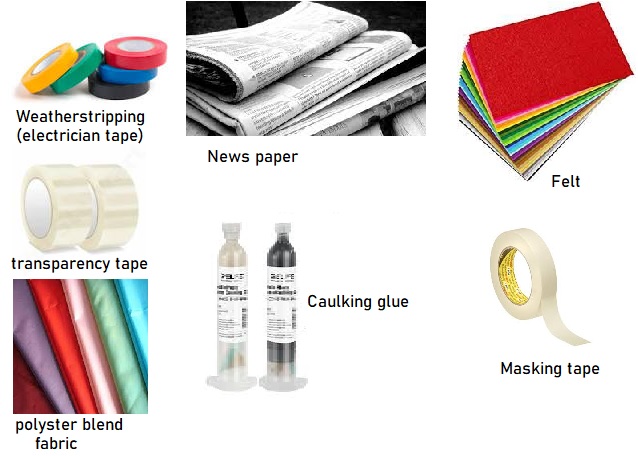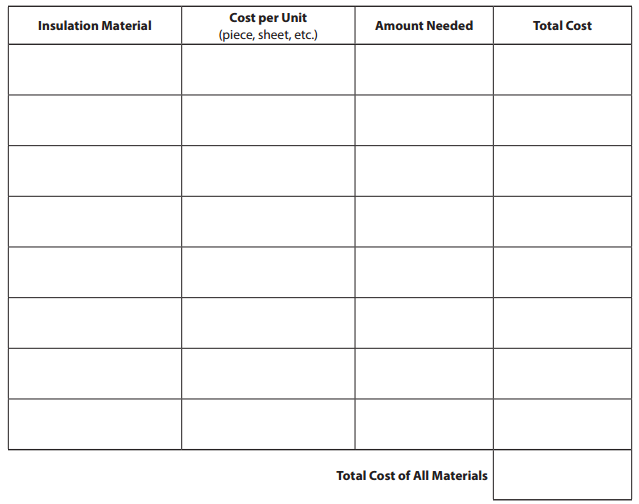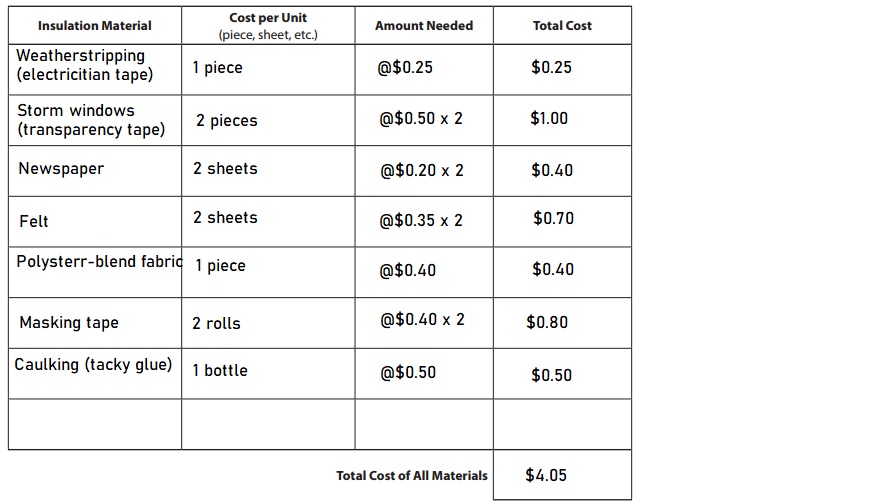Students looking for the Bridges in Mathematics Grade 5 Home Connections Answer Key Unit 8 Module 2 can find a better approach to solve the problems.
Bridges in Mathematics Grade 5 Home Connections Answer Key Unit 8 Module 2
Bridges in Mathematics Grade 5 Home Connections Unit 8 Module 2 Session 1 Answer Key
Volume of Earth Materials
The students in Mr. Ivy’s class decided to use boxes to test how earth materials collect and store solar energy.
Question 1.
A box in the classroom had a volume of 99 cubic inches. What were its dimensions, if no side had a length of 1 inch? Show your work using words, numbers, or labeled sketches.
Answer:
3″ × 3″ × 11″ box sides
11″ × 3″ × 3″ box sides
3″ × 11″ × 3″ box sides
Explanation:
With reference to the given information,
A box in the classroom had a volume of 99 cubic inches.
If no side had a length of 1 inch, then dimensions of a box are as follows,
length 3″ width 3″ and height 11″ box
3″ × 3″ × 11″ box sides.
length 11″ width 3″ and height 3″ box
11″ × 3″ × 3″ box sides.
length 3″ width 11″ and height 3″ box
3″ × 11″ × 3″ box sides.
Question 2.
Students in the class made several different boxes to help them decide which size to use. The dimensions of their boxes are listed. Find the volume of each.
Note: Remember to label each answer with the correct units, cubic inches or in3.
a. 7″ × 12″ × 9″ box
Answer:
756 in3
Explanation:
With reference to the given information,
length 7″ width 12″ and height 9″ box
7″ × 12″ × 9″ box = 756 in3
b. 7″ × 12″ × 4″ box
Answer:
336 in3
Explanation:
With reference to the given information,
length 7″ width 12″ and height 4″ box
7″ × 12″ × 4″ box = 336 in3
c. 5″ × 10″ × 8″ box
Answer:
400 in3
Explanation:
With reference to the given information,
length 5″ width 10″ and height 8″ box
5″ × 10″ × 8″ box = 400 in3
d. 1″ × 6″ × 3″ box
Answer:
18 in3
Explanation:
With reference to the given information,
length 1″ width 6″ and height 3″ box
1″ × 6″ × 3″ box = 18 in3
Question 3.
The class decided to use 7″ × 12″ × 4″ boxes. They put rocks in 9 boxes. How many cubic inches of rocks did they need to fill the 9 boxes? Show your work.
Answer:
3,024 in3
Explanation:
With reference to the given information,
The class decided to use 7″ × 12″ × 4″ boxes.
They put rocks in 9 boxes.
Total cubic inches of rocks did they need to fill the 9 boxes,
volume = 7″ × 12″ × 4″
V = 336 in3
cubic inches of rocks did they need to fill the 9 boxes
= 9 × 336
= 3,024 in3
Question 4.
After the students filled every box with an earth material, they placed each box in the sun so that the greatest possible surface area was exposed. What is the surface area of one of the box’s earth material that is exposed to the sun?
Answer:
84 sq in for one box.
756 sq in for 9 boxes.
Explanation:
With reference to the given information above,
The class use 7″ × 12″ × 4″ boxes
Top surface area = Length X Width
A = 7″ × 12″ = 84 sq in for one box.
for total 9 box
9 x 84 sq in = 756 sq in.
Question 5.
CHALLENGE When they were preparing their experiment, one of the groups realized their box full of rocks was actually 7″ × 11″ × 4″, and another group discovered theirs was 8″ × 12″ × 4″. How many cubic inches of rocks had the class actually used to fill all 9 boxes? Show your work.
Answer:
One box volume of one group V1
V1= 2,772 in3
one box volume of another group V2
V2 = 3,456 in3
Explanation:
With reference to the given information above,
One box volume of one group V1
V1 = 7″ × 11″ × 4″
V1 = 308 in3
V1 x 9 = 308 x 9 = 2,772 in3
one box volume of another group V2
V2 = 8″ × 12″ × 4″
V2 = 384 in3
V2 x 9 = 384 x 9 = 3,456 in3
Bridges in Mathematics Grade 5 Home Connections Unit 8 Module 2 Session 3 Answer Key
Windows on a House
Question 1.
Amber, a student in Mr. Ivy’s class, went home and made a model house with dimensions 11.5″ wide by 10″ long by 8″ tall. What is the volume of Amber’s model house? Show your work.
Answer:
920 in3
Explanation:
With reference to the given information above,
A model house with dimensions 11.5″ wide by 10″ long by 8″ tall.
The volume of Amber’s model house Volume,
V = 10″ × 11.5″ × 8″
V = 920 in3
Question 2.
What is the surface area of one of the 11.5″ × 8″ walls? Show your work.
Answer:
92 sq in.
Explanation:
With reference to the given information above,
the surface area of one of the wall 11.5″ × 8″
A = Length x Width
A = 11.5″ × 8″
A = 92 sq in.
Question 3.
Amber decided to cut a window that took up \(\frac{1}{8}\) of the surface area of one of the 10″ × 8″ walls. How many square inches of the wall were left? Show your work. Hint: Make a labeled sketch to help solve this problem.
Answer:
70 sq in.
Explanation:
With reference to the given information above,
the surface area of one of the wall 10″ × 8″
A = 10″ × 8″ = 80 sq in.
\(\frac{1}{8}\) of the surface area
\(\frac{1}{8}\) × 80 = 10 sq in
Total square inches of the wall were left,
= 80 – 10
= 70 sq in.
Question 4.
Jeremy also made a model house over the weekend. Its dimensions were 25″ wide by 22″ long by 12″ tall. Jeremy used his brother’s new roll of blue duct tape to tape along all of the edges of the house. His brother complained that Jeremy used most of his 20-foot roll of tape. Did Jeremy really use most of his brother’s tape? Explain your reasoning.
Answer:
No, Jeremy used 7.8ft tape of his brother’s 20-foot roll of tape.
Explanation:
With reference to the given information above,
Jeremy’s model house dimensions were 25″ wide by 22″ long by 12″ tall.
Jeremy used his brother’s new roll of blue duct tape to tape along all of the edges of the house.
25″ wide by 22″ long
Perimeter P = 2[length + width]
P = 2[25 + 22]
P = 94 in
P = 7.8 ft
So, Jeremy used most of his 20-foot roll of tape.
Question 5.
Jeremy’s brother paid $19.17 for three rolls of colored duct tape at the hardware store. How much did he pay per roll? Show your work.
Answer:
$6.39 per roll.
Explanation:
With reference to the given information above,
Jeremy’s brother paid $19.17 for three rolls of colored duct tape at the hardware store.
Total amount he pay per roll,
$19.17 ÷ 3 = $6.39
Bridges in Mathematics Grade 5 Home Connections Unit 8 Module 2 Session 5 Answer Key
Buying Materials
Note to Families
In class, students have been making and insulating model houses. They can choose among several materials for their house’s insulation: newspaper, felt, or fabric for walls and floors; weatherstripping, masking tape, or caulking for corners and edges; and storm windows or fabric curtains for windows. If your student isn’t sure what materials to choose, suggest these possibilities.
Mr. Ivy’s class made model houses with the dimensions of 11″ wide by 10″ long by 8″ tall. Each house has 56 square inches of windows. Alex’s team needs to buy some insulation materials for their house. They can spend $4.50 on materials. The costs are listed in the table below.

Help Alex and his team decide how to spend their $4.50 to insulate their house.
Question 1.
Use the space below to make sketches and calculate the cost of different materials.
Answer:
Total cost of different materials = $2.6

Explanation:
With reference to the above given information,
Cost of weatherstripping (electrician tape) = half yard @$0.25
Strom windows (transparency tape) = 8.5″ x 11″ @$0.50 each
News paper 1 sheet = @$0.20
Felt = 8.5″ x 5.5″ @$0.35 each
Polyester blend fabric = @$0.40 per square inch.
Masking tape = @40.40 per roll
Caulking glue = @$0.50 per bottle
Question 2.
Fill in the Insultation Cost Sheet below to show what you think Alex’s team should buy. List each item and its cost per unit, the amount needed, and the total cost for that material. When you have listed all the materials, find the total cost, and make sure that you haven’t gone over $4.50.
Insulation Cost Sheet

Answer:
Choosing of materials may vary.

Explanation:
With reference to the above given information,
Cost of weatherstripping (electrician tape) = half yard @$0.25
Strom windows (transparency tape) = 8.5″ x 11″ @$0.50 each
$0.50 x 2 = $1.00
News paper 1 sheet = @$0.20
$0.20 x 2 = $0.40
Felt = 8.5″ x 5.5″ @$0.35 each
$0.35 x 2 = $0.70
Polyester blend fabric = @$0.40 per square inch.
Masking tape = @$0.40 per roll
$0.40 x 2 = $0.80
Caulking glue = @$0.50 per bottle
Total material cost = $0.25 + $1.00 + $0.40 + $0.70 + $0.40 + $0.80 + $0.50 = $4.05
Question 3.
Explain the reasoning behind your selection of materials. Why did you choose these particular materials?
Answer:
Answer may vary.
Explanation:
Transparency films, newspapers, felt, masking tape are delicate and possible of damage.
So, I think we need double the quantity rather than other materials.